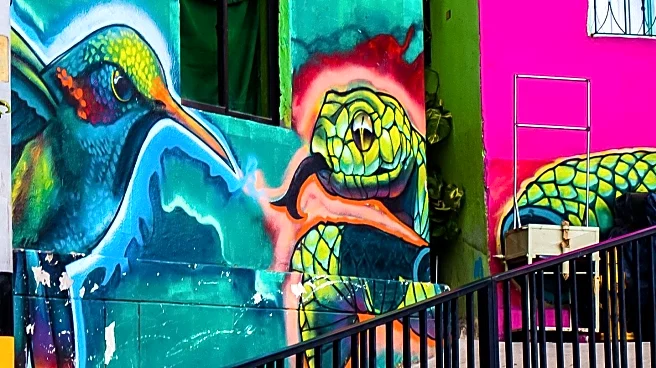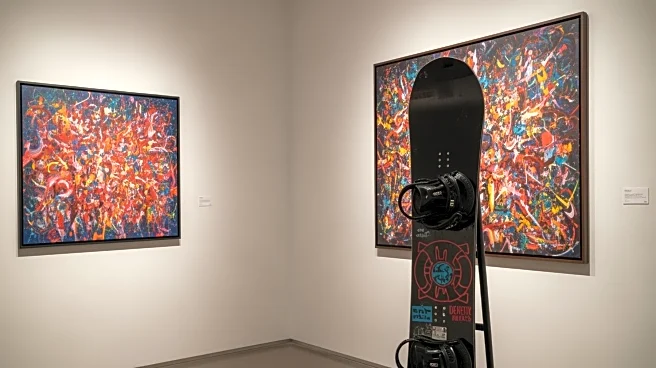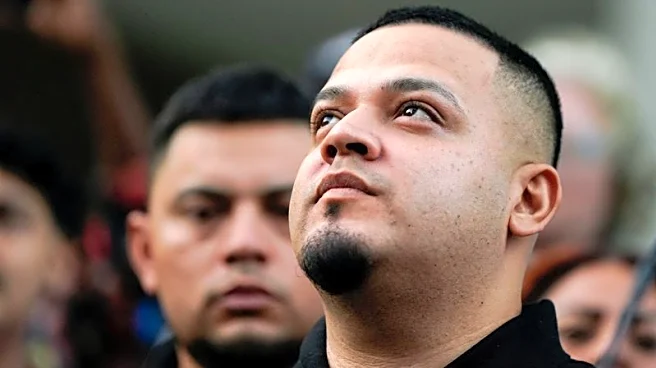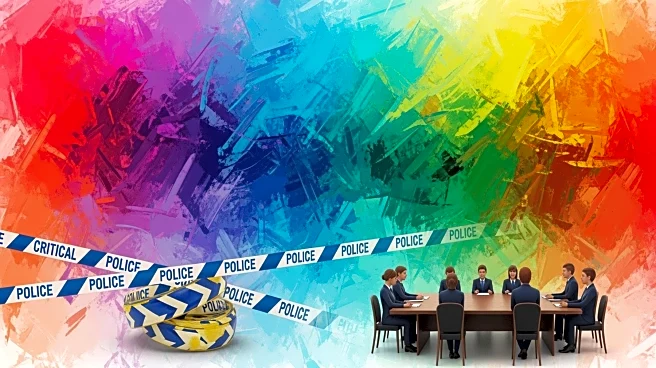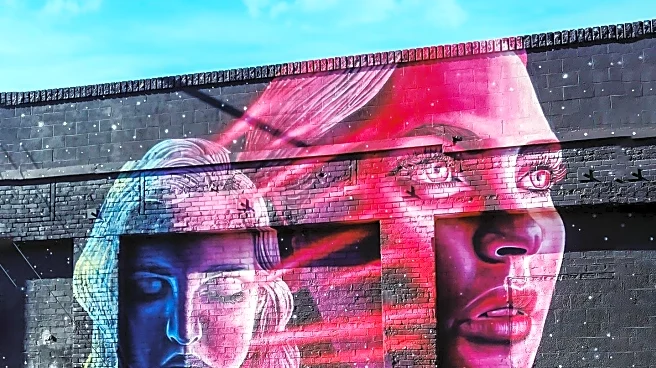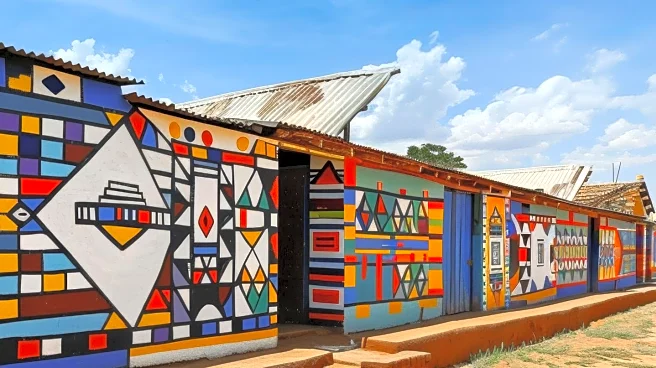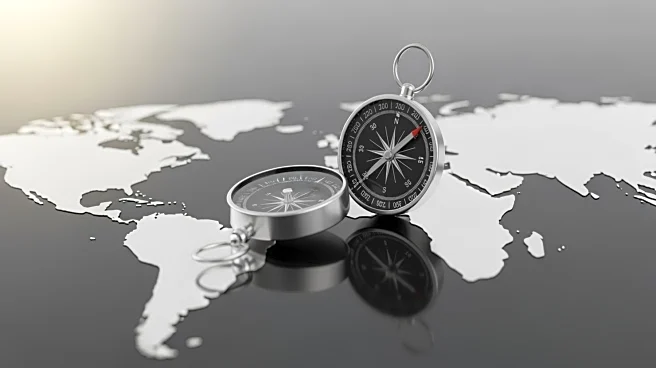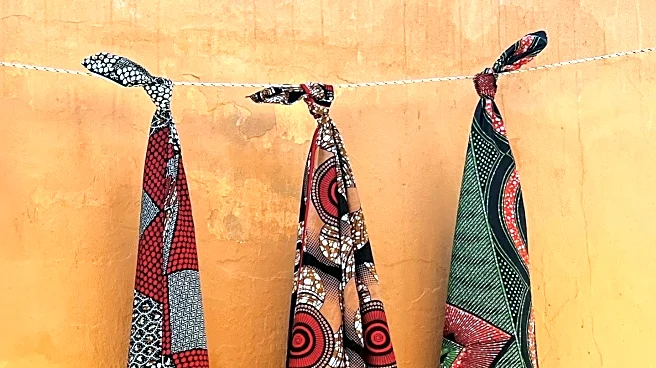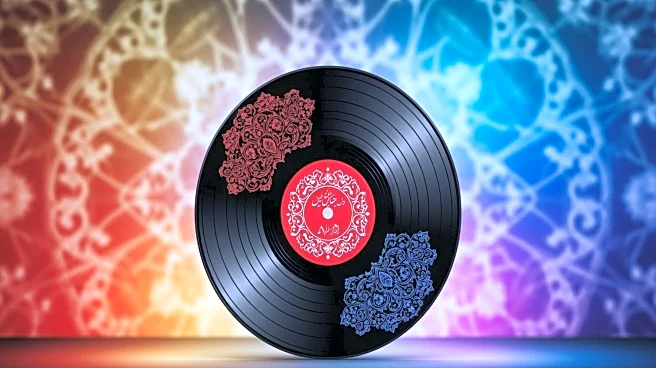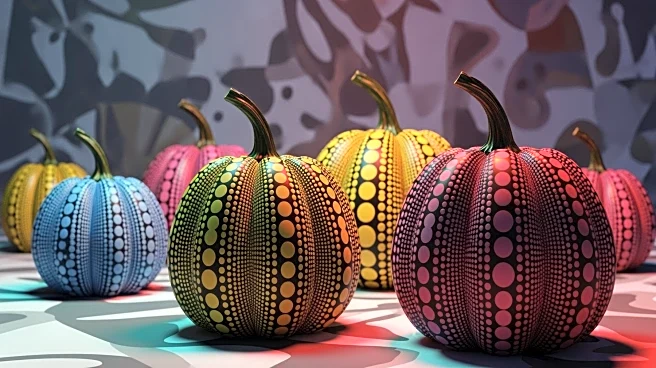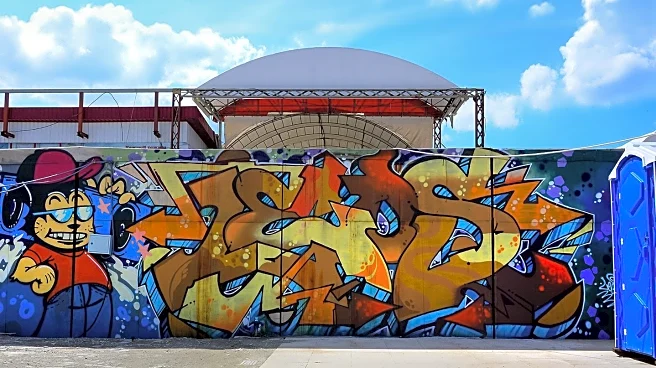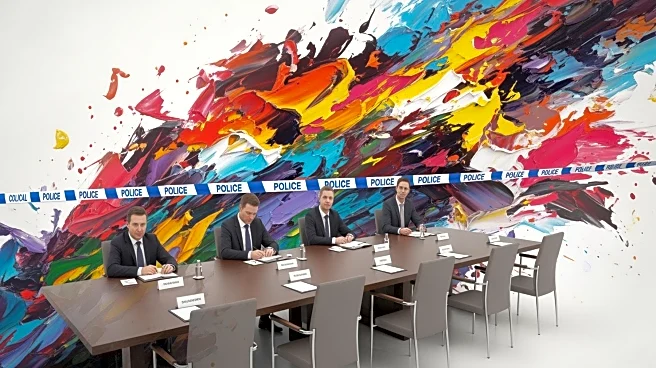What's Happening?
Graffiti, a form of urban street art that originated in the United States during the 1960s and 1970s, has found a growing acceptance in West Africa, particularly in Senegal and Guinea. Omar Diaw, known by his artist name 'Chimere,' has been instrumental
in this transformation in Guinea's capital, Conakry. Initially perceived as vandalism, Diaw's approach to graffiti has been to use it for public awareness campaigns, such as promoting COVID-19 preventive measures. His work, which includes large-scale portraits of famous Guinean musicians and African independence leaders, has become a significant part of Conakry's urban landscape. Diaw's mentor, Amadou Lamine Ngom, also known as 'Docta,' was one of the first graffiti artists in West Africa, starting in Dakar, Senegal, in 1988. Ngom's work has evolved to reflect African realities and values, gaining respect from local communities and authorities.
Why It's Important?
The acceptance and integration of graffiti into the urban fabric of West African cities like Conakry and Dakar signify a shift in cultural perception and artistic expression. This transformation not only beautifies the cities but also serves as a medium for social and political commentary. Graffiti has become a tool for raising awareness on critical issues such as migration and government policies, thereby influencing public discourse. The support from local authorities, such as Conakry's governor, highlights the potential for graffiti to be used as a positive force for change. This acceptance could pave the way for more diverse artistic contributions, including increased participation from women in the graffiti scene, challenging traditional gender roles in art.
What's Next?
As graffiti continues to gain acceptance in West Africa, there is potential for further expansion and diversification of the art form. Artists like Diaw are advocating for more women to join the graffiti scene, which could lead to a broader range of perspectives and styles. The growing popularity of graffiti may also inspire collaborations with international artists, fostering cultural exchange and innovation. Additionally, as graffiti becomes more embedded in political and social movements, it could play a significant role in shaping public opinion and policy in the region.
Beyond the Headlines
The evolution of graffiti in West Africa reflects broader cultural and societal changes, including the democratization of art and the empowerment of local communities. By addressing themes relevant to African societies, graffiti artists are contributing to a unique cultural identity that resonates with the public. This development also raises questions about the role of art in activism and its ability to influence political change. As graffiti becomes more mainstream, it challenges traditional notions of art and its place in public spaces, potentially leading to new forms of artistic expression and community engagement.
